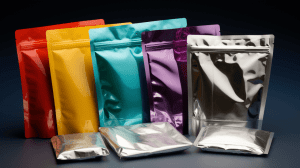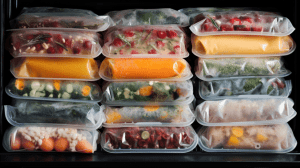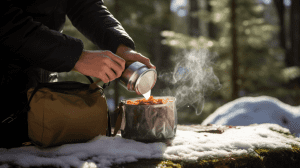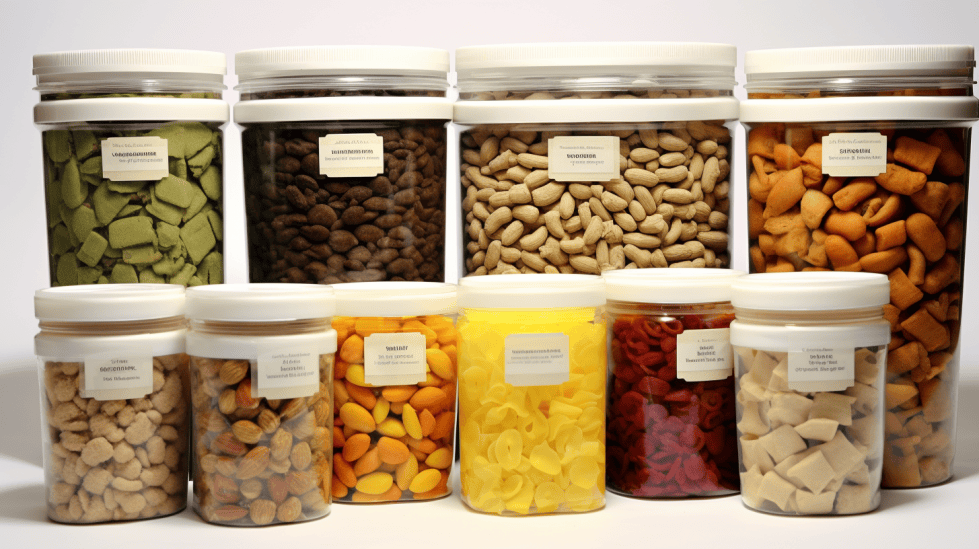How to Freeze Dry Food for Long Term Storage
Freeze drying food is an excellent method for preserving it over the long-term, ensuring that it remains both nutritious and flavorful. This process involves removing water from food by freezing it and then sublimating the ice crystals into vapor. By doing so, you can prolong the shelf life of various foods, making them ideal for storing away and using during times of emergency, or simply reducing food waste.
In this article, we will delve into the essentials of freeze drying food for long-term storage – from understanding the concept to the equipment you need, the foods best suited for freeze drying, and how to properly store them. We will wrap up with tips on how to rehydrate and use freeze-dried food, ensuring you get the most out of your preserved meals.
Key Takeaways
- Freeze drying preserves food long-term with retained nutritional value and flavor
- Select appropriate foods and equipment for the freeze-drying process
- Store freeze-dried food correctly for maximum shelf life and easy rehydration
Understanding Freeze Drying
Freeze drying, also known as lyophilization, is a dehydrating process that preserves food for long-term storage. As someone who has researched the process, I can confidently say that it’s an effective way to retain the nutritional benefits and taste of food, while extending its shelf life.
To better understand how freeze drying works, one must know the basics of the freeze-drying process. In this process, food is first frozen at low temperatures between -30°F and -50°F (-34°C and -45°C). Then, a vacuum pump removes the air from the chamber containing the frozen food, and the trays holding the food are slightly heated. As the water in the food heats, it sublimates, meaning that the water content is converted directly from a solid (ice) to a gaseous state (water vapor), without passing through the liquid phase.
Some advantages of using the freeze-drying method to preserve food include:
- Nutrient retention: Freeze-dried foods maintain most of their original nutrients, which makes them a healthier option for long-term storage.
- Taste and texture preservation: Freeze drying helps retain the natural taste, color, and texture of the original food, making it more enjoyable to consume when rehydrated.
- Extended shelf life: Properly stored freeze-dried foods can last for years, making them perfect for emergency situations and long-term planning.
I’ve found that most types of food can be freeze-dried, including fruits, vegetables, meats, dairy products, and even whole meals. However, not all foods are suitable for freeze drying. Foods with high oil or fat content, such as avocados and nuts, don’t freeze-dry well and may spoil quicker, even when properly stored.
When it comes to storing freeze-dried food, there are a few essential factors to consider. Seal the food in airtight containers and store it in a cool, dark, and dry place to prevent spoilage. Mylar bags and vacuum sealing are popular options for ensuring a long shelf life.
As someone who has looked into freeze-drying food, I can assure you that it’s an effective, reliable way to preserve food for long-term storage. The process maintains both the flavor and nutritional content of your food, making it ideal for emergency situations and future consumption.
Getting Started: Essential Equipment
When I decided to start freeze-drying food for long-term storage, I quickly realized that having the right equipment is crucial to achieve the best results. In this section, I will share the essential equipment needed for freeze-drying food at home.

The first and most important piece of equipment is a freeze dryer. I chose a Harvest Right home freeze-dryer because it is specifically designed for domestic use and comes in various sizes to suit my needs. These machines make the process much easier and efficient compared to DIY methods.
Next, I needed a vacuum pump. This is a critical component as it removes air and moisture from the food during the freeze-drying process. Some freeze-drying machines, like the ones from Harvest Right, include a vacuum pump with the purchase, making it more convenient.
A vacuum chamber is not always necessary for a home freeze-drying setup, especially if you have a freeze-drying machine that already integrates a vacuum system. However, for those experimenting with DIY methods or using a separate vacuum pump, a vacuum chamber may be required.
In addition to the core freeze-drying equipment, there are a few supplemental tools that help with preserving and storing the dried food. One such item is oxygen absorbers, which are placed in the storage containers to help maintain the freshness of the freeze-dried food.
A vacuum sealer is another vital tool when it comes to storing freeze-dried food. It removes air from the packaging, ensuring that my food stays fresh for an extended period. An impulse sealer can also be used to seal the storage bags, providing an airtight seal to lock in freshness.
While not essential, dry ice can be utilized in some DIY freeze-drying methods. It rapidly cools the food, aiding in the freeze-drying process. However, handling and using dry ice requires caution and proper safety measures due to its extremely low temperature.
In summary, I found that having the right equipment made a significant difference in the quality and efficiency of my food preservation efforts. By investing in a freeze dryer, vacuum pump, vacuum sealer, and oxygen absorbers, I set myself on a clear path towards successfully freeze-drying food for long-term storage.
Choosing the Right Food for Freeze Drying

As someone who freeze dries food for long-term storage, I know the importance of selecting the right types of foods. In fact, the ideal choices for freeze-drying are those that have a high nutritional value while maintaining their quality once rehydrated.
I personally find that freeze-dried fruits and vegetables work really well. They not only keep their vibrant color and texture but also retain most of their essential nutrients, making them a perfect choice for food preservation. Some of my favorites include berries, apples, and green beans. However, it is wise to avoid freeze-drying leafy greens as they often end up with a papery texture that can be off-putting.
Dairy products, like cheese, yogurt, and milk, can be freeze-dried surprisingly well. These options are fantastic for long-term storage because they tend to have a high nutritional value, particularly in terms of their protein and calcium content.
In terms of proteins, freeze-dried meat can be an excellent addition to the pantry. It is important to remember that raw meat must be cooked first before freeze-drying. Chicken, beef, and turkey are particularly suitable for this process, due to their low fat content and rich protein content.
One of the benefits of freeze-drying is the ability to create whole meals, complete with a variety of vegetables, proteins, and grains. This not only ensures a balanced diet but also simplifies mealtime when it comes to rehydrating and enjoying the food. Examples of such full meals could be pasta dishes with a vegetable medley, or a hearty stew filled with freeze-dried meat and vegetables.
Of course, I have to stress that moderation is key when choosing which food items to freeze dry. It’s essential to strike a balance between variety, taste, and nutritional value to ensure that you have a well-rounded selection for long-term storage. By following these suggestions, you’ll be on your way to mastering the art of freeze-drying and preserving your favorite foods.
The Freeze-Drying Process Explained
When I freeze-dry food, I use a method that preserves it while maintaining its taste, texture, and nutrients. The process involves three main steps: freezing, primary drying, and secondary drying.
In the freezing stage, I ensure that the food is frozen solid, which is crucial for the success of the process. Freezing food creates ice crystals inside it, which helps preserve the structure and taste. It also ensures that the high water content present in the food adequately turns into ice, which will be removed later in the process. This is typically done by placing the food in a freezer or a specialized freeze-drying machine.
Next comes the primary drying stage, where the pressure inside the freeze-drying chamber is reduced, allowing the ice crystals inside the frozen food item to turn into water vapor through a process called sublimation. This step is critical because it removes the majority of the moisture content from the food without any direct heat. Maintaining low temperatures and reduced pressure ensures that the food remains stable and avoids any potential damage to its structure.
Finally, during secondary drying, I apply a small amount of heat while keeping the pressure low in the chamber. The slight heat increase allows any remaining water molecules inside the food to be effectively removed as vapor. This step helps to ensure that no cold water remains trapped inside the food, which could lead to potential spoilage or detriment to the food’s quality.
By utilizing the freeze-drying process, I can significantly extend the shelf life of various food items without compromising their taste, texture, or nutritional value. Some examples of foods that can be freeze-dried include fruits, vegetables, meats, and even full meals. Successful freeze-drying not only provides long-term food storage options but also allows for convenient and lightweight options when it comes to travel or emergency preparedness.
Storage Solutions for Freeze-Dried Food

When I consider long-term storage for freeze-dried food, choosing an airtight container is essential. I personally prefer using Mylar bags as they are durable, lightweight, and easy to seal. Another option I’ve found helpful is mason jars, which also create an airtight seal and are a convenient size for stacking in a pantry or storage area.
Additionally, I try to keep my freeze-dried foods in dark locations, as exposure to direct sunlight can negatively impact their quality and shelf life. My storage room is an ideal space, as it maintains a consistent room temperature and provides the necessary protection from sunlight. If I can’t use mason jars or Mylar bags, I’ll occasionally use thick, opaque plastic bags as alternative storage solutions.
I’ve learned that maintaining a dry place for freeze-dried food storage is essential. Any moisture that enters the food storage containers will reduce the shelf life and potentially ruin the food. To avoid moisture issues, I always make sure my storage area is well-ventilated and free from dampness.
In conclusion, for successful long-term storage of freeze-dried food, I make sure to use airtight containers, keep the food in a dark place at room temperature, and store them in a dry environment. By following these practices, I can confidently maintain the quality and longevity of my freeze-dried food supplies.
How to Store Freeze-Dried Food for Longevity
Storing freeze-dried food for long-term storage is essential if you’re looking to preserve the quality and shelf life of your food. I’ve found that the best option for preserving freeze-dried food is by using airtight containers, such as Mylar bags. These bags are durable, lightweight, and easy to seal, providing the ideal conditions for long shelf life.
When preparing to store my freeze-dried food, I make sure to keep out moisture and oxygen, as these elements can compromise the quality and shelf life of the food. To achieve this, I use oxygen absorbers in the Mylar bags, ensuring that there isn’t any oxygen that can destroy my food over time.
Another key consideration is the storage environment. In my experience, freeze-dried food lasts longer when stored in low temperatures and away from excessive heat or high temperatures. I typically choose a cool, dark pantry or cold storage room to store my freeze-dried goods, as extreme temperatures can have a negative impact on the shelf life.
For keeping my freeze-dried food organized, I make sure to label the containers with the contents and date of storage. This helps me track the age of each item and ensures that I consume the food in a timely manner for the best results.

Freezing and storing my food at 0°F or lower is necessary if I want to maintain the highest quality and preserve the nutrients. To achieve this, I avoid overloading the freezer with unfrozen food and leave adequate space for air circulation around the packages. This approach also helps me to freeze foods quickly, ultimately leading to better preservation.
In summary, when storing freeze-dried food for long-term use, I follow these essential steps: choose the right airtight container, use oxygen absorbers, maintain a cool and stable storage environment, label the containers, and freeze foods at 0°F or lower. By doing so, I ensure the longevity and quality of my stored freeze-dried food for years to come.
Rehydrating and Using Freeze-Dried Food
As someone who appreciates the convenience and longevity of freeze-dried food, I often rely on quality brands like Mountain House and Valley Food Storage. Rehydrating freeze-dried food is a simple process that involves adding water, which will bring it back to its original state and flavor. In this section, I will briefly explain how to rehydrate and use freeze-dried food.
First, I carefully measure the amount of freeze-dried food that I want to rehydrate. It’s essential to use the right quantity so that I end up with the desired serving size. After measuring out my freeze-dried food, I place it in a bowl or container.
Next, I add hot water to the freeze-dried food. Hot water is ideal for rehydrating most freeze-dried items as it speeds up the process and helps retain the food’s original texture and flavor. I generally use the package instructions as a guideline for the amount of water to add, but as I gain experience, I sometimes make slight adjustments to suit my preferences.

Once the hot water is added, I let the freeze-dried food sit and rehydrate for several minutes, stirring occasionally to ensure that all the food pieces are evenly exposed to the water. The time needed for rehydration varies depending on the specific food item, but it generally takes anywhere between 5 and 15 minutes.
During the rehydration process, I keep an eye on the food to make sure it’s reaching the desired texture and consistency. If needed, I may add a little more water or let it sit for a few extra minutes to ensure that it’s properly rehydrated.
Finally, once my freeze-dried food has reached its original state and flavor, it’s ready to eat or incorporate into my favorite recipes. I enjoy the convenience of having a quick and easy meal that still retains its nutritional value and taste, making freeze-dried food a reliable option for my long-term food storage needs.
Emergency Preparedness with Freeze-Dried Food
As someone who values emergency preparedness, I believe that having a well-stocked emergency food supply is crucial. One excellent method of preserving food for long-term use is freeze-drying. Freeze-dried food retains its flavor, nutrients, and texture, making it a desirable option for emergency situations.
Adding freeze-dried meals to my emergency food supply ensures that I have a variety of options available in times of need. Given that emergencies are unpredictable, it is essential to know how to freeze-dry food at home. By preparing freeze-dried fruits and vegetables, I create a supply that is lightweight, easy to store, and requires minimal preparation during emergencies.
A vital aspect of emergency preparedness involves estimating the amount of food needed for each individual in the household. I find it helpful to create a plan that accounts for the duration and type of emergency one may face. Depending on the situation, a variety of freeze-dried food options may be required, such as fruit, vegetables, grains, protein sources, and dairy.
In addition to freeze-dried food, I also keep an emergency supply of water and other essentials in my preparedness kit. By combining freeze-dried meals with other non-perishable food items and water, I ensure that my emergency food supply covers all nutritional needs while maintaining stability at room temperature.
Ultimately, incorporating freeze-dried food into my emergency preparedness plans has provided me with confidence and peace of mind, knowing that I am well-equipped to handle most emergency situations.
Other Considerations for Freeze Drying
In recent years, freeze drying has become an excellent way to preserve food for long-term storage. I’ve found that the best way to freeze dry food depends on factors like the type of food, its size, and packaging methods. Here are some essential considerations to keep in mind when freeze drying food for home use.
Cutting food into small pieces is a great way to ensure proper freeze drying. For instance, when freeze drying meat, I often cut it into different sizes and thicknesses depending on my needs. Small pieces not only dry more efficiently but also rehydrate better when it’s time to use them.
Selecting the appropriate packaging is essential for long-term storage. Smaller Mylar bags are a good idea for packaging freeze-dried food, as they take up less space and protect the contents from moisture and oxygen. My experience has shown that using bags of varying sizes makes a huge difference in maximizing storage capacity.
For some foods, like fruits and vegetables, blending them into a powder is the easiest way to preserve and store them in less space. I found that powdered versions of foods are just as nutritious and tasty as their whole counterparts and can be rehydrated or used in recipes without any hassle.
In conclusion, combining these considerations with the relevant entities discussed above helps ensure an effective freeze drying process that yields long-lasting, high-quality preserved food. By following these guidelines, I can confidently prepare and store various types of food to be enjoyed later.
Frequently Asked Questions
What is the best method of packaging freeze-dried food for long-term storage?
I recommend using airtight containers, such as Mylar bags or vacuum-sealed bags, to store your freeze-dried food. These containers protect the food from moisture, light, and air, which can negatively affect its longevity. Moreover, consider using an oxygen absorber to further extend the shelf life of your freeze-dried food. Store your packaged food in a cool, dark place to ensure optimal results.
What is the difference between freeze-drying and dehydrating food for storage?
The main difference between freeze-drying and dehydrating lies in the process and final moisture content. Freeze-drying involves rapidly freezing food, then applying a vacuum to remove ice crystals through sublimation, which results in a moisture content of around 2%. Dehydrating involves using heat and air circulation to evaporate moisture, typically resulting in a moisture content of around 10-15%. Freeze-dried food usually maintains a better taste and nutritional content compared to dehydrated food because of its lower exposure to heat during the process.
Can I use a regular dehydrator to freeze dry food?
I advise against using a regular dehydrator to freeze dry your food, as they are not designed for that purpose. Dehydrators work by applying heat to evaporate moisture, while freeze-drying requires rapid freezing and a vacuum chamber to remove moisture through sublimation. In order to freeze dry food properly, you will need a dedicated freeze-drying machine.
What are the advantages of using a Harvest Right freeze dryer?
A Harvest Right freeze dryer provides many advantages when it comes to freeze-drying food for long-term storage. These machines are designed specifically for residential use, allowing you to process a variety of foods in the comfort of your own home. Harvest Right freeze dryers are easy to operate, provide excellent quality results, and their patented technology ensures a longer shelf life compared to other preservation methods.
What is the process of freeze-drying food using dry ice?
Freeze-drying food using dry ice involves placing your prepared food on a tray or in a shallow container, then covering it with a layer of dry ice. Next, place the tray or container inside an insulated cooler, seal it, and let the mixture sit for about 24 hours. This method can be effective in preserving your food but is generally considered less efficient and less consistent in terms of quality compared to using a dedicated freeze-drying machine.
How can I extend the shelf life of freeze-dried food in Mason jars?
To extend the shelf life of freeze-dried food stored in Mason jars, I suggest using oxygen absorbers and a vacuum-sealing attachment specifically designed for Mason jars. This creates an airtight seal, preventing oxygen from interacting with your stored food. Additionally, store the jars in a cool, dark place to further extend their shelf life. Ensure that you properly sanitize and dry the jars before filling them with your freeze-dried food.








